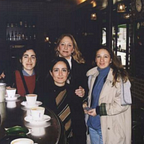Chemist Kim Dunbar Explain So-Called Sandwich Compounds & Efficient Technology
Kim Dunbar reports on a recent study on sandwich compounds powered by rare earth metals and discusses how these developments can lead to improved technology in the future.
Texas A&M University (TAMU) has developed an international reputation for excellence in recent decades, most notably for its science and research departments. Inorganic chemist Kim Dunbar is one of the university’s leading scientists and professors, and, below, she explains to readers how sandwich compounds and rare earth elements can mean big things for tech
“A team from the Karlsruhe Institute of Technology (KIT) are working hard to uncover new uses for sandwich compounds, which could prove applicable in technology by making storage media more efficient and improving displays, among other benefits,” says Kim Dunbar. “The rare earth elements at the core of these compounds are known for their special electronic or magnetic properties that we’ve already adapted to our high-tech products.”
Sandwich compounds are still being explored by scientists around the world, and their properties are still largely undiscovered. These chemical molecules form a pair of ring structures that entraps a single metal atom between them. The result is something that resembles a microscopic sandwich, hence their name.
The rings that make up the outer edges of the sandwich compounds are made up of carbon and a variable proportion of other elements, and their sizes depend on the experiment. Scientists from KIT aim to systematically vary the size and structure of the rings in the hopes that they will acquire a structure-effect relationship. For now, the team especially focuses on the molecules’ magnetism and luminescence as well as how the overall structure impacts its physical properties.
Kim Dunbar tells us that Professor Peter Roesky, who is the Head of the Chair for Inorganic Functional Materials of the Institute of Inorganic Chemistry (AOC), is leading the research at KIT. He and his team produce a variety of compound sandwich complexes in their facilities using atoms from rare earth elements as the centers.
“Society already employs rare earth elements in their day-to-day through various technologies like mobile displays and LED lamps,” says Kim Dunbar. “Using rare earth in the production of molecular compounds is a relatively new approach, but which can render tremendous improvements in the technologies we all rely on.”
In the future, results from these experiments will hopefully lead to a more concrete understanding of these novel materials and thus more advanced applications for society.
Originally published at https://www.playbuzz.com on July 14, 2020.
